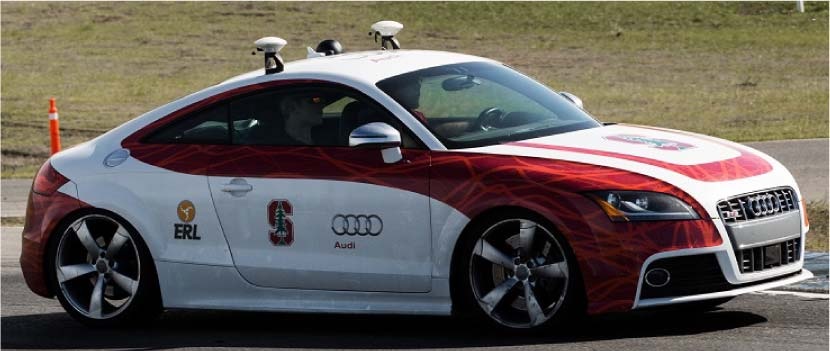The realm of self-driving cars is often littered with buzzwords and technical jargon that can easily make even the most enthusiastic observer’s eyes glaze over. However, occasionally an innovation arrives that shakes off the dry narrative and reminds us why we’re all excited about AI and autonomous vehicles in the first place. A recent study by researchers at Stanford University explored the thrilling interplay between human intuition and machine precision by pitting a self-driving car against a champion racer. This study not only highlights the potential of AI in navigating extreme driving conditions but also raises essential questions about the future of transportation.
The Need for Speed: Research with a Twist
At first glance, comparing a self-driving car to a professional racer may seem like an outlandish stunt, but there’s actual scientific inquiry behind it. It turns out that the majority of autonomous vehicle (AV) testing occurs under routine conditions, where the driving is predictably stable. However, the real world often throws unexpected challenges at drivers, particularly during high-pressure situations. The pivotal question the Stanford team sought to address was: can a self-driving car adapt successfully when thrown into extreme scenarios that push the boundaries of conventional driving?
Breaking Down the Technical Challenges
The study published in the journal *Science Robotics* establishes that typical physics-based models can fall short when faced with unpredictable variables. These models have limitations, particularly when they must simulate tire dynamics at high speeds and slipping conditions—details crucial for maintaining control of the vehicle. Instead, the researchers turned to neural networks, which can handle complex, real-time inputs to fine-tune the car’s response while maneuvering.
- Input and Feedback: The car’s AI accommodates data from simulations alongside real-world observations, allowing it to make nuanced adjustments in real time. This adaptability is crucial in situations where traditional models may falter, particularly as the physical limits of driving are reached.
- The Genus of Racing: To assess performance, the team used a “champion amateur race car driver” to test the 2009 Audi TTS. This human element in the study provides a baseline for AI performance and adaptability when driving on the edge.
Venturing Into the Unknown: Insights from the Track
The findings from the track at Thunderhill Raceway Park were illuminating. Both the AV and the human racer set out to complete the course as quickly as possible, pushing their limits—5G acceleration, tire adhesion, the works. What became evident is that while the self-driving Audi exhibited remarkable consistency in maintaining a precise racing line, human drivers displayed a wider range of performance. Their flexible approach often allowed for quicker lap times overall, demonstrating the instinctual capability that humans possess.
What Lies Ahead?
This experiment lays the groundwork for future exploration into the fine line between autonomous efficiency and human intuition. While it’s clear that the self-driving technology is preparing to take on tougher challenges, it still has room for improvement in scenarios requiring split-second decisions. Although Shelley, the self-driving Audi, demonstrated low variability in performance, it’s the unpredictability and adaptability characteristic of human drivers that still proves advantageous in certain situations.
At fxis.ai, we believe that such advancements are crucial for the future of AI, as they enable more comprehensive and effective solutions. Our team is continually exploring new methodologies to push the envelope in artificial intelligence, ensuring that our clients benefit from the latest technological innovations.
Conclusion: A New Era of Intelligent Driving
The clash between human intuition and autonomous decision-making is only the beginning. This groundbreaking study reveals a promising path for integrating AI technology into real-world driving scenarios. As researchers continue to refine their models and experiment with high-stakes conditions, we look forward to when self-driving vehicles can truly match or even surpass human capabilities on all fronts. For the time being, the racetrack serves as an exciting battleground, one where science and competition collide in the quest for safer, smarter driving solutions.
For more insights, updates, or to collaborate on AI development projects, stay connected with fxis.ai.

